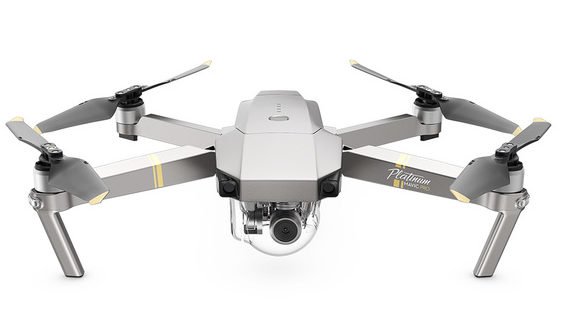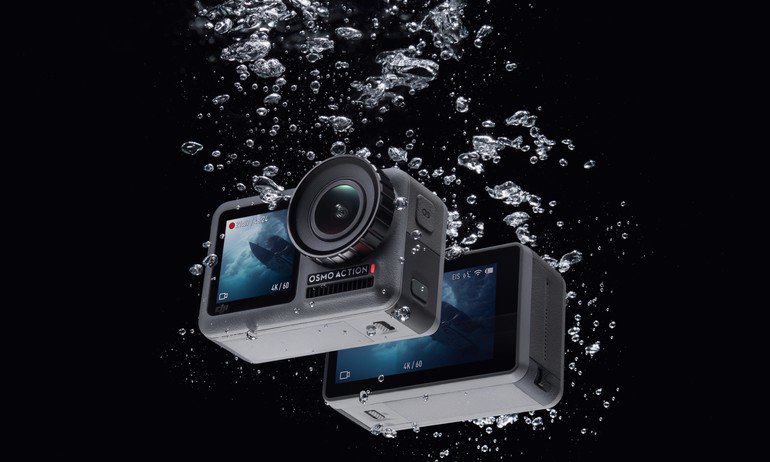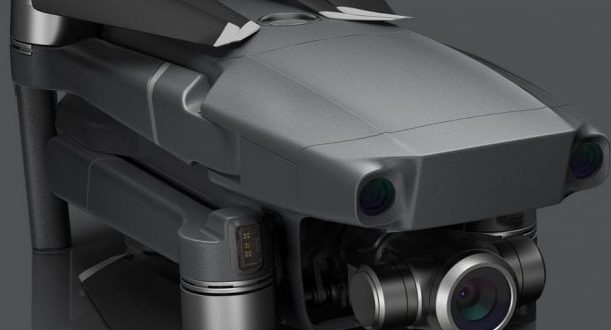Before the launch of the RoboMaster S1 earlier this month, many guessed DJI was about to unveil its first consumer drone of 2019: A Spark 2, a new line of FPV racing drones, or maybe even a Phantom 5.
But that proved to be wishful thinking. The drone industry’s leading manufacturer sprang a surprise and ventured into the educational robotics market instead. The launch of the RoboMaster S1 followed the Osmo Action camera in May, which itself followed a string of enterprise releases earlier this year.
Which means we’ve not had a flagship consumer/prosumer product launch from DJI since the unveiling of the Mavic 2 Zoom and Mavic 2 Pro in August 2018.
It’s been a while since the launch of the Mavic 2 Pro and Zoom.
That’s not to say DJI hasn’t been busy. 2019 has seen the rollout of the Mavic 2 Enterprise Dual, the Smart Controller, improved fleet management software, Manifold 2, DJI Terra and more. There’s plenty going on.
But it does highlight a shift in priority. The consumer drone slowdown – from a manufacturer known for quick iterations and product turnarounds – shows the reality of how the market is shaping up. We’re looking at a consumer drone plateau of sorts – particularly if Parrot’s 2018 market contractions are industry-wide as we expect.
There are a number of reasons why DJI’s frantic pace has slowed.
Consumer drone market contractions
From DJI’s perspective, the consumer drone market has been well and truly conquered. The company already has compelling products at pretty much every price point. And there’s no sense a competitor is placed to seriously contend with that dominance any time soon.
However, a shift away from rapid new releases could also reflect a contraction across the board. We don’t have access to DJI’s exact revenue figures for 2018 like we do Parrot’s, but we do know that DJI reported 18 billion yuan ($2.83 billion) revenue in 2017, which was up 80% on 2016.
Those growth figures are spectacular – but not as spectacular in the context of revenue growth for 2014 (300%) and 2015 (100%). Maybe things are slowing down just a little?
DJI’s early and decisive moves have given the company an unassailable lead over consumer rivals such as Parrot. But there are certain realities that could limit crazy consumer revenue growth in the long term.
For starters, the majority of drone enthusiasts are unlikely to buy a new drone at the rate DJI has traditionally released them to market. A new model or upgrade each year is beyond the bank balance of most pilots. This is why it makes more sense to offer options across different price points and create a ladder of entry and progression, as DJI has done so effectively.

The Mavic Pro Platinum, extending the life of the original Mavic Pro.
Rapid iteration and annual product turnaround work well for a niche of mass market items, like smartphones. That’s arguably for three reasons.
First, they tend to be purchased via contract. Upfront costs are waived in preference for monthly subscriptions. Second, they are seen as fashionable accessories, not just useful accessories. We’re still far from the point at which consumer drones become fashionable in the same way. They probably never will.
And finally, it’s because there’s an element of built-in obsolescence that drives smartphone sales. Some manufacturers have been caught deliberately making their phones unusable over time in an effort to encourage new purchases. That kind of strategy obviously wouldn’t go down well in the drone business, where performance, reliability and safety are paramount.
It’s also important to note that drone technology has plateaued to an extent – at least it has from a consumer’s perspective. Does the capability difference between, say, the original Mavic Pro and the new Mavic Pro 2 justify another $1,000+ outlay?
If you have deep pockets and a passion for the hobby, sure. The marginal gains and incremental improvements add up to a lot. But if you’re a recreational pilot who doesn’t fly that often, maybe not.
The big unknown is whether DJI has already reached a critical mass of recreational drone pilots. There could still be plenty of buzz left in the consumer market. Time will tell.
DJI’s drones keep eating each other
Another reason we haven’t had a major release in 2019 from DJI is that the Phantom range is, it seems, on the way out.
DJI has been clever when repurposing and tweaking models to extend their viability, from the Phantom 4 RTK to the Mavic Pro Platinum, to all the different types of Phantom 3 that were on sale at one point.
But we can’t help but feel that the latest Mavic 2 Pro drones have put the nail in the coffin of any Phantom 5 ambitions. A Phantom 5 would need some extraordinary capabilities to make it a compelling choice against the portability of the Mavic 2 line.
We’re not sure what those could be at this stage.
Similarly, the Mavic Air and the DJI-sold Tello from RyzeTech have both eaten into the Spark’s family-friendly/beginner market.
Which raises another issue facing DJI. When we say family friendly/beginner, we do it knowing that all of DJI’s consumer drones are easy to fly. Accessibility is no longer something consumers have to shop specifically for. That’s obviously a major positive, but it makes it more challenging to develop compelling entry-level products.
One launch we could see in 2019 is a new iteration of the Spark – a Spark 2. But it would have to be carefully priced to avoid stepping on the Mavic Air’s toes.
See what we mean? DJI’s drones keep eating each other. Every new launch is a delicate balancing act.
Focus elsewhere
As we mentioned above, another reason for DJI’s lack of consumer drone launches this year could simply be because there is so much focus elsewhere.
DJI has been making huge steps into enterprise hardware and software, a sector that’s projected to far exceed the potential of consumer sales in the long term.

Setting sights on GoPro customers: DJI’s new Osmo Action camera.
At the same time, this month’s step into educational tech and the continued development of the Osmo series suggests that DJI wants to be a consumer technology company, not just a drone company. DJI has its sights set on the GoPro customer base.
Even for a company with the resources, R&D and manufacturing prowess of DJI, it makes sense to concentrate on those emerging possibilities.
Trade war headaches
There’s one final angle as to why it’s been a quiet 2019 so far DJI’s for consumer drone division. The company is facing political uncertainty in its most successful market: the US.
As a Chinese manufacturer and an industry leader, DJI has come under plenty of scrutiny in recent years. There have been a series of stories related to cybersecurity. Most recent was a DHS alert about Chinese drones.
The alert didn’t mention DJI explicitly and DJI has taken a number of measures to ensure the safety of its customer data to put this issue to bed.
But with a Trump administration intent on cracking down on Chinese technology companies, taking a breath to see how the situation unfolds makes a lot of sense.
Having said that, unlike Huawei, DJI has an influential US-based team and a range of US customers that can vouch for the company. A ban seems very unlikely.
What can we expect from DJI for the rest of 2019?
A big clue may have been in an unlikely place: DJI’s plan to add the AirSense safety feature to all of its new drones.
“All new DJI drone models released after January 1, 2020 that weigh more than 250 grams will include AirSense technology,” said the statement in May.
There are two ways to read between the lines here. The statement suggests DJI could release another lightweight drone before the end of the year – although the original Spark was 300 grams and new iterations tend to get bigger, not smaller.
But it all but confirms that there won’t be any major releases or developments upon the Mavic Air or Phantom range before 2020. It wouldn’t make sense to hype up the release of AirSense only to launch a new model in 2019 that doesn’t have it built in.
Malek Murison is a freelance writer and editor with a passion for tech trends and innovation. He handles product reviews, major releases and keeps an eye on the enthusiast market for DroneLife.
Email Malek
Twitter:@malekmurison
Subscribe to DroneLife here.
https://dronelife.com/2019/06/21/dji-2019-consumer-drone-slowdown/
 Unmanned Aerial Vehicle The latest drone news
Unmanned Aerial Vehicle The latest drone news





